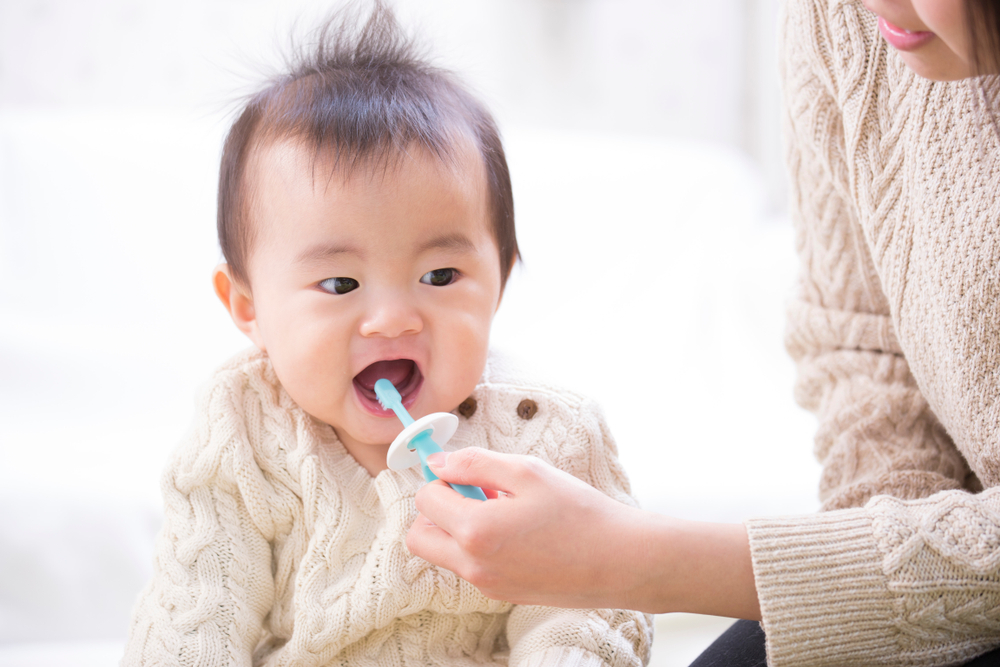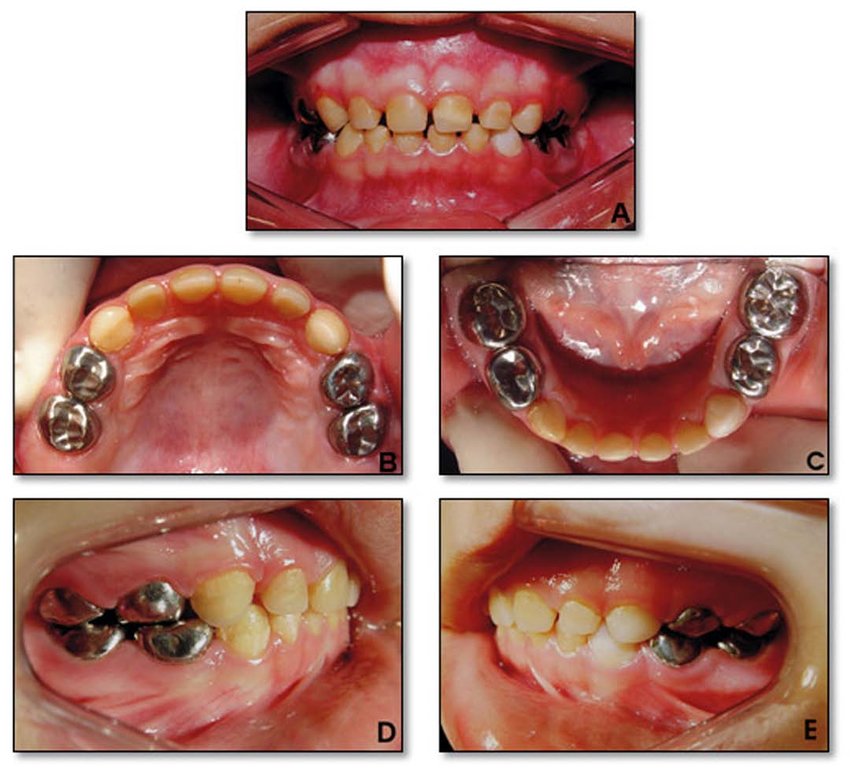Common Teething Myths and Misconceptions

Teething is a major developmental milestone in a baby’s life, and it often becomes a topic of concern and confusion for parents and caregivers. From the moment the first tooth begins to break through the gums, a flurry of myths and misconceptions can arise. These myths can sometimes lead to unnecessary worry or ineffective management of teething discomfort. Understanding what’s true and what’s not about teething can help parents navigate this phase with more confidence and less anxiety.
In this article, we will debunk common myths and misconceptions about teething and provide accurate information to guide parents through this natural process.
What is Teething?
Teething refers to the process of an infant’s teeth erupting through the gums. It typically begins around six months of age, but it can start as early as three months or as late as twelve months. The complete set of baby teeth, or primary teeth, usually appears by the time a child is three years old. While teething is a natural part of growth, it can be uncomfortable for some babies, leading to various symptoms like gum irritation, drooling, and fussiness.
Common Teething Myths and Misconceptions
Myth 1: Teething Causes High Fever
One of the most prevalent myths about teething is that it causes high fever. While it’s true that some babies may experience a slight rise in temperature due to gum inflammation, teething should not cause a high fever (above 100.4°F or 38°C). A high fever is usually indicative of an infection or another illness, not teething. If your child has a high fever, it’s essential to consult a pediatrician to rule out other causes.
Myth 2: Teething Causes Diarrhea
Another common misconception is that teething can cause diarrhea. The belief likely stems from the increased drooling and the fact that babies often put objects in their mouths during this phase, which can introduce bacteria. However, teething itself does not directly cause diarrhea. If your baby has persistent diarrhea, it’s crucial to look for other causes such as infections or dietary changes and consult a healthcare provider if necessary.
Myth 3: Teething Pain is the Same for All Babies
Teething is a highly individual experience, and not all babies will have the same symptoms or levels of discomfort. Some infants may barely show signs of teething, while others can be quite fussy and experience significant discomfort. The perception of teething pain can also vary depending on factors like the baby’s temperament and the timing of tooth eruption.
Myth 4: Teething Can Cause Serious Illness
There’s a persistent belief that teething can lead to serious illnesses like ear infections or respiratory issues. While teething can cause mild symptoms such as irritability, drooling, and a slight temperature increase, it should not cause severe symptoms like vomiting, persistent high fever, or rashes beyond a mild facial rash from drooling. Any serious symptoms should be evaluated by a healthcare professional, as they are not typical of teething.
Myth 5: All Teething Remedies are Safe
Many parents turn to over-the-counter teething remedies to help soothe their child’s discomfort. However, not all of these products are safe. For instance, teething gels containing benzocaine can be harmful and have been linked to a rare but serious condition called methemoglobinemia, which reduces the amount of oxygen carried in the blood. Similarly, teething necklaces or bracelets pose risks of choking and strangulation. It’s important to use safe, doctor-recommended methods for teething relief, such as cold washcloths, teething rings, and gentle gum massages.
Myth 6: Teething Leads to Sleep Regression
Some parents associate teething with sleep regression, believing that the discomfort disrupts the baby’s sleep patterns significantly. While teething can cause some sleep disturbances due to discomfort, it’s usually not the primary cause of sleep regression. Sleep patterns in infants can be influenced by numerous factors including developmental milestones, changes in routine, and growth spurts. It’s best to maintain consistent sleep routines and provide comfort as needed without assuming that teething is the sole cause of sleep issues.
Myth 7: Hard Objects Help Soothe Teething Pain
There’s a common belief that giving babies hard objects to chew on, such as teething biscuits or hard toys, will help relieve teething pain. However, hard objects can damage a baby’s delicate gums and even pose choking hazards. Instead, opt for safe teething rings made of soft silicone or rubber that can be chilled but not frozen. The cold can help numb the gums, providing relief without the risk of injury.
Myth 8: Teething Stops After the First Teeth Appear
Teething is an ongoing process that continues well beyond the appearance of the first teeth. Primary teeth typically erupt until around the age of three. Even after the initial set of teeth has come in, molars and other teeth will continue to erupt over the next few years. It’s important for parents to be prepared for multiple rounds of teething and to understand that this process is a gradual one.
Myth 9: Every Baby Teethes at the Same Time
There’s a wide range of normal when it comes to the timing of teething. Some babies might start teething as early as three months, while others may not get their first tooth until after their first birthday. The order in which teeth appear can also vary. Genetics play a significant role in determining the timing of teething, and late teething is not usually a cause for concern.
Myth 10: You Can Predict When a Baby Will Start Teething
Many parents try to predict when their baby will start teething based on early symptoms like drooling or chewing on hands. However, these behaviors are also typical of normal infant development and not exclusive indicators of teething. The only definitive sign of teething is the visible appearance of a tooth. Trying to predict the exact timing of teething can lead to unnecessary stress.
The Truth About Teething: Setting the Record Straight
Understanding the normal signs of teething can help parents manage this phase more effectively. Typical symptoms include:
- Increased drooling.
- Gum swelling and tenderness.
- Fussiness or irritability.
- Biting or chewing on objects.
- Mild temperature increase (not a high fever).
Safe Teething Remedies
- Cold Washcloths: Chilling a clean, wet washcloth for your baby to chew on can provide relief.
- Teething Rings: Opt for BPA-free, chilled (not frozen) teething rings.
- Gentle Gum Massage: Using clean fingers to gently massage the gums can ease discomfort.
- Distraction: Engaging your baby in play or other activities can sometimes help divert their attention from teething pain.
When to Seek Medical Advice If your baby exhibits symptoms such as a high fever, diarrhea, persistent crying, or signs of an illness unrelated to teething, it’s important to consult a pediatrician. These symptoms are not typical of teething and may indicate other health issues.
Conclusion
Teething is a natural part of a child’s development, but it is surrounded by many myths and misconceptions that can lead to confusion and unnecessary worry for parents. By understanding what is true and what isn’t, parents can better support their babies through the teething process. It’s essential to rely on safe, evidence-based remedies and consult healthcare providers when in doubt. Remember, every baby is unique, and teething experiences can vary widely. With the right knowledge and approach, parents can make teething a smoother experience for their little ones.
Related to read:
Best Oral Hygiene Practices For Optimum Oral Health.
Bruxism: Teeth grinding causes treatment and prevention.
How to keep your gums healthy and disease-free?
References
To ensure the information provided is accurate and up-to-date, the following sources were referenced:
- American Dental Association. (n.d.). Plaque and Tartar. Retrieved from ADA website
- Mayo Clinic. (n.d.). Dental Plaque. Retrieved from Mayo Clinic website
- National Institute of Dental and Craniofacial Research. (n.d.). Periodontal (Gum) Disease. Retrieved from NIDCR website









